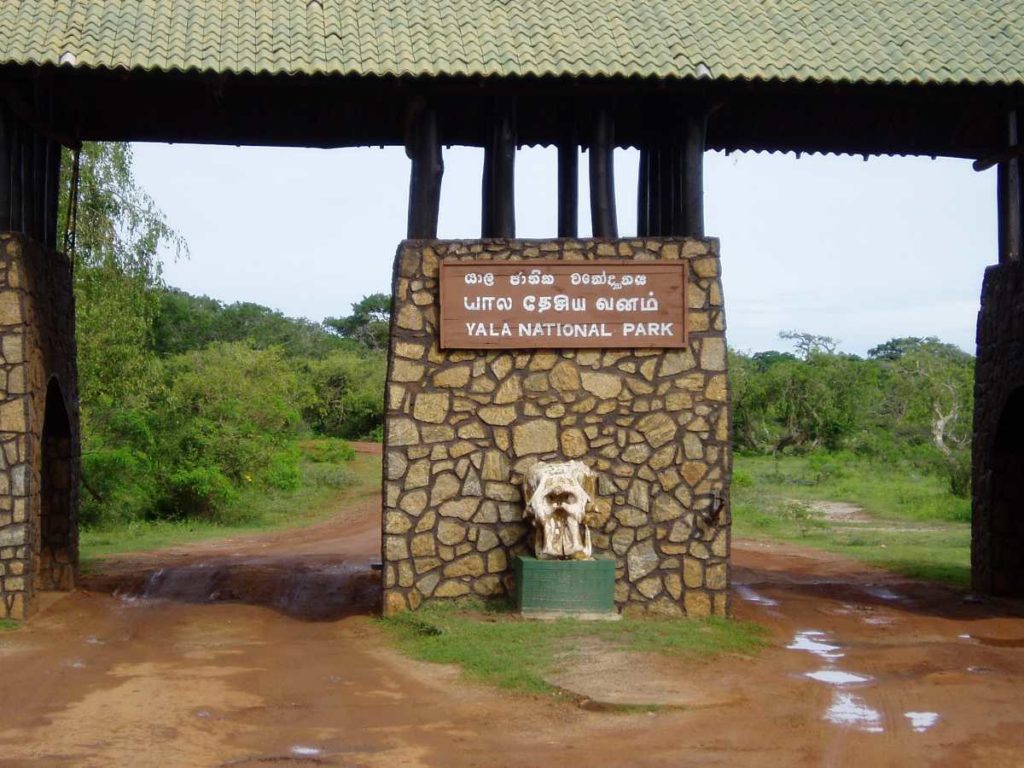
Importance of Yala National Park
The Yala area is mostly composed of metamorphic rock belonging to the Precambrian era and classified into two series, Vijayan series and Highland series. Reddish brown soil and low humic grey soil are prominent among six soil types. Yala is situated in the lowest peneplain of Sri Lanka, which extends from Trincomalee to Hambantota. Topographically the area is a flat and mildly undulating plain that runs to the coast with elevation is 30 metres (98 ft) close to the coast while rising in the interior to 100–125 metres (328–410 ft). The national park is situated in the dry semi-arid climatic region and rain is received mainly during the northeast monsoon. The mean annual rainfall ranges between 500–775 millimetres (19.7–30.5 in) while the mean temperature ranges between 26.4 °C (79.5 °F) in January to 30 °C (86 °F) in April. It is windier in Yala, during the southwest monsoon compared to the wind during the northeast monsoon with wind speeds from 23 kilometres per hour (14 mph) to 15 kilometres per hour (9.3 mph).
Water is abundant after the northeast monsoon, but during the dry season surface water becomes an important factor. The bodies of surface water appear in the forms of streams, tanks, waterholes, rock pools, and lagoons. Waterholes occur in low lying places while rock pools of varying size are capable of containing water year-round, and are hence an important source of water for elephants. For many water birds and water buffaloes natural waterholes are ideal habitats. Such reservoirs are largely concentrated to the Block I followed by Block II. Several tanks are there including, Maha Seelawa, Buthawa, Uraniya, and Pilinnawa tanks.Many rivers and streams flow in a southeasterly direction, originating in the highlands of adjacent Uva and central hills. Kumbukkan Oya in the east and Menik River and its tributaries in the west flow across the park, and provide an important water source in the dry season to wild animals of the park. Normally the streams of the park are dry during the drought season. These rivers and streams exhibit a degree of runoff fluctuations between wet and dry seasons. Kumbukkan Oya discharges seven times as much water in the rainy season than in the dry season. A number of lagoons are situated along the coast line of the park.There are several routes to get to Yala from Colombo, while the route via Ratnapura and Tissamaharama is the shortest with 270 kilometres (170 mi).
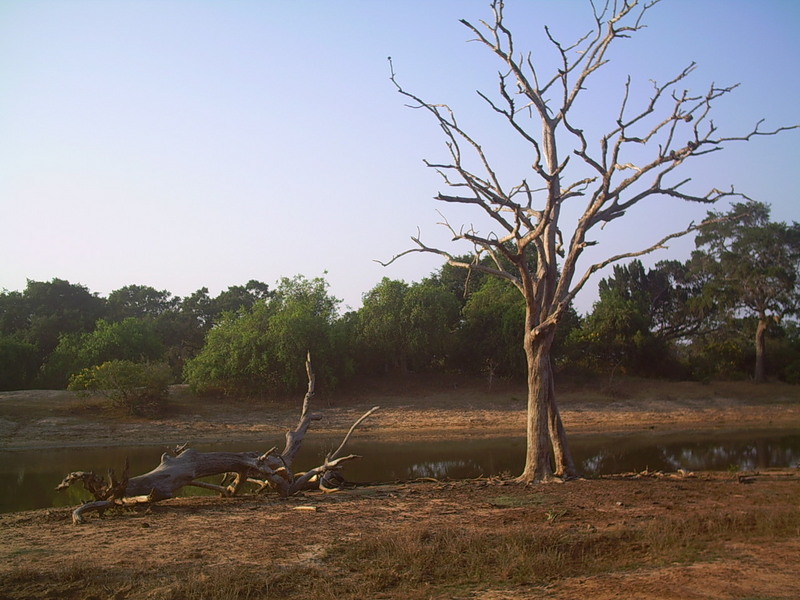
History of Yala National Park
The Yala area is mostly composed of metamorphic rock belonging to the Precambrian era and classified into two series, Vijayan series and Highland series. Reddish brown soil and low humic grey soil are prominent among six soil types. Yala is situated in the lowest peneplain of Sri Lanka, which extends from Trincomalee to Hambantota. Topographically the area is a flat and mildly undulating plain that runs to the coast with elevation is 30 metres (98 ft) close to the coast while rising in the interior to 100–125 metres (328–410 ft). The national park is situated in the dry semi-arid climatic region and rain is received mainly during the northeast monsoon. The mean annual rainfall ranges between 500–775 millimetres (19.7–30.5 in) while the mean temperature ranges between 26.4 °C (79.5 °F) in January to 30 °C (86 °F) in April. It is windier in Yala, during the southwest monsoon compared to the wind during the northeast monsoon with wind speeds from 23 kilometres per hour (14 mph) to 15 kilometres per hour (9.3 mph).
Water is abundant after the northeast monsoon, but during the dry season surface water becomes an important factor. The bodies of surface water appear in the forms of streams, tanks, waterholes, rock pools, and lagoons. Waterholes occur in low lying places while rock pools of varying size are capable of containing water year-round, and are hence an important source of water for elephants. For many water birds and water buffaloes natural waterholes are ideal habitats. Such reservoirs are largely concentrated to the Block I followed by Block II. Several tanks are there including, Maha Seelawa, Buthawa, Uraniya, and Pilinnawa tanks. Many rivers and streams flow in a southeasterly direction, originating in the highlands of adjacent Uva and central hills. Kumbukkan Oya in the east and Menik River and its tributaries in the west flow across the park, and provide an important water source in the dry season to wild animals of the park. Normally the streams of the park are dry during the drought season. These rivers and streams exhibit a degree of runoff fluctuations between wet and dry seasons. Kumbukkan Oya discharges seven times as much water in the rainy season than in the dry season. A number of lagoons are situated along the coast line of the park.There are several routes to get to Yala from Colombo, while the route via Ratnapura and Tissamaharama is the shortest with 270 kilometres (170 mi).
Map of Yala National Park
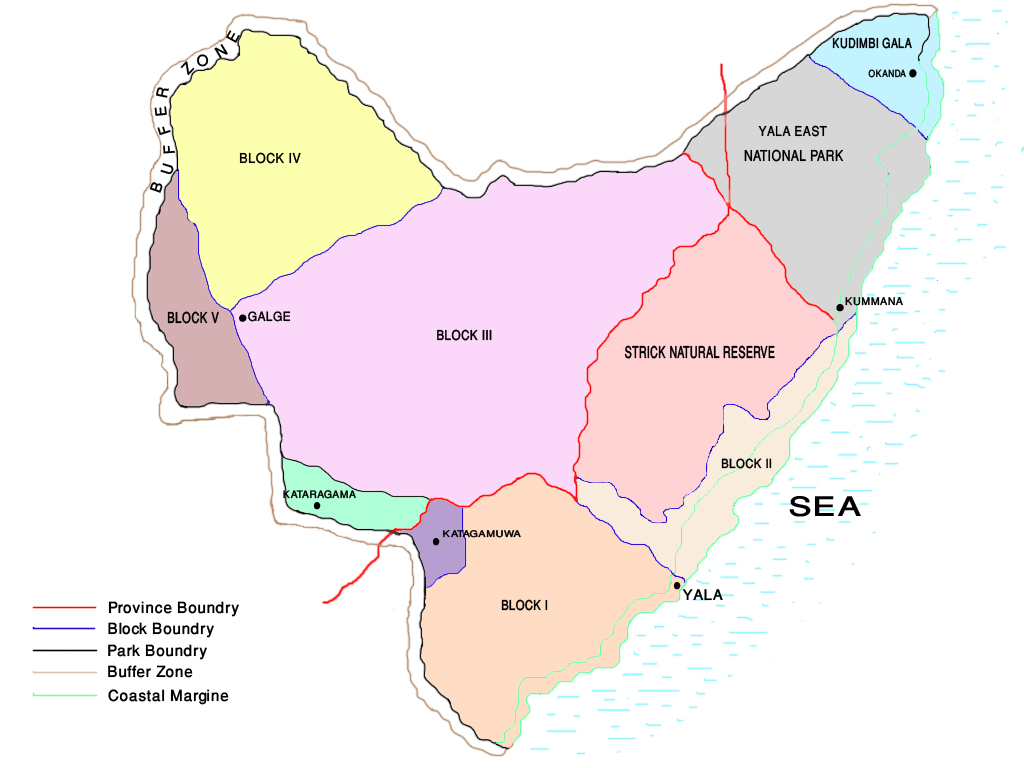
Physical Features of Yala National Park
The Yala area is mostly composed of metamorphic rock belonging to the Precambrian era and classified into two series, Vijayan series and Highland series. Reddish brown soil and low humic grey soil are prominent among six soil types. Yala is situated in the lowest peneplain of Sri Lanka, which extends from Trincomalee to Hambantota. Topographically the area is a flat and mildly undulating plain that runs to the coast with elevation is 30 metres (98 ft) close to the coast while rising in the interior to 100–125 metres (328–410 ft). The national park is situated in the dry semi-arid climatic region and rain is received mainly during the northeast monsoon. The mean annual rainfall ranges between 500–775 millimetres (19.7–30.5 in) while the mean temperature ranges between 26.4 °C (79.5 °F) in January to 30 °C (86 °F) in April. It is windier in Yala, during the southwest monsoon compared to the wind during the northeast monsoon with wind speeds from 23 kilometres per hour (14 mph) to 15 kilometres per hour (9.3 mph).
Water is abundant after the northeast monsoon, but during the dry season surface water becomes an important factor. The bodies of surface water appear in the forms of streams, tanks, waterholes, rock pools, and lagoons. Waterholes occur in low lying places while rock pools of varying size are capable of containing water year-round, and are hence an important source of water for elephants. For many water birds and water buffaloes natural waterholes are ideal habitats. Such reservoirs are largely concentrated to the Block I followed by Block II. Several tanks are there including, Maha Seelawa, Buthawa, Uraniya, and Pilinnawa tanks. Many rivers and streams flow in a southeasterly direction, originating in the highlands of adjacent Uva and central hills. Kumbukkan Oya in the east and Menik River and its tributaries in the west flow across the park, and provide an important water source in the dry season to wild animals of the park. Normally the streams of the park are dry during the drought season. These rivers and streams exhibit a degree of runoff fluctuations between wet and dry seasons. Kumbukkan Oya discharges seven times as much water in the rainy season than in the dry season. A number of lagoons are situated along the coast line of the park.There are several routes to get to Yala from Colombo, while the route via Ratnapura and Tissamaharama is the shortest with 270 kilometres (170 mi)
Flora Diversity
Yala National Park has a variety of ecosystems including moist monsoon forests, dry monsoon forests, semi deciduous forests, thorn forests, grasslands, marshes, marine wetlands, and sandy beaches. The area under forest cover mainly consists of Block I and rangelands of open parkland (Pelessa grasslands) including some extensive grasslands. The forest area is restricted to around the Menik River while rangelands are found towards the sea side. Other habitat types of the Block I are tanks and water holes, lagoons and mangroves and chena lands. The mangrove vegetation in the Buthuwa lagoon is largely Rhizophora mucronata while Avicennia spp. and Aegiceras spp. are less abundant. The vegetation of Block II is similar to those of Block I, and Yalawela, once a fertile paddy field, represents Pitiya grasslands. The mangroves of Block II occur around the estuary of Menik River, which extent to 100 hectares (0.39 sq mi). The common mangrove plants are Rhizophora mucronata, Sonneratia caseolaris, Avicennia spp., and Aegiceras corniculatum. The lagoons of Pilinnawa, Mahapothana, and Pahalapothana are also located in this block.The other common mangrove species are Sonneratia caseolaris, Acanthus ilicifolius, Excoecaria agallocha, and Lumnitzera racemosa. In the bare sand Crinum zeylanicum is found.
In the Blocks III, IV, and V, forests are more widespread. The canopy of the forest mainly contains Drypetes sepiaria and Manilkara hexandra plant species. The Pitiya grasslands are important for grazing animals. Cynodon barberi is the common grass in Pitiya grasslands while Zoysia matrella becomes dominant near the beach. Among 300 odd floral species are Manilkara hexandra, Drypetes sepiaria, Ceylon Satinwood, Terminalia arjuna, limonia, Berrya cordifolia, Randia dumetorum, Pleurostylia opposita, Gymnema sylvestre, Bell mimosa, Neem, Banyan, Toothbrush tree, Schleichera oleosa, Vitex pinnata, Indian blackberry, Gmelina asiatica, Carissa spinarum, Euphorbia antiquorum, and Acacia eburnea.In the seasonally flooded areas of Block II, a wild species of rice is found. Glenniea unijuga is an endemic plant species found around the wetlands of the park. Munronia pumila, Salacia reticulata, and Asparagus racemosus are some medicinal plants.
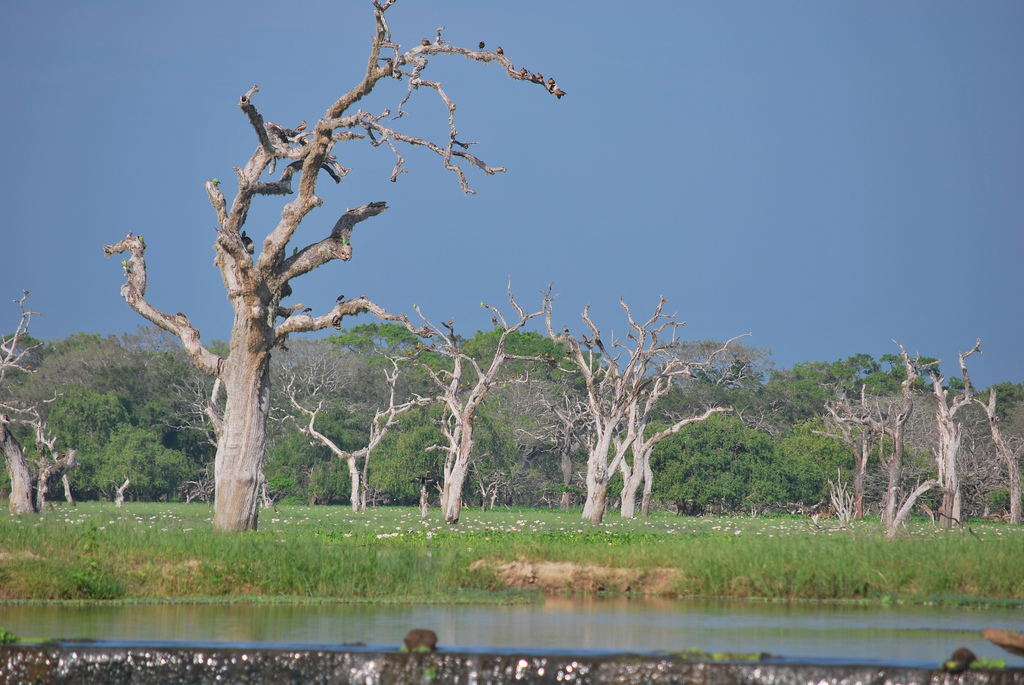
Fauna Diversity
Birds
Yala is one of the 70 Important Bird Areas (IBAs) in Sri Lanka.[10] Of 215 bird species of the park, seven are endemic to Sri Lanka.[2] They are Sri Lanka grey hornbill, Sri Lanka junglefowl, Sri Lanka wood pigeon, crimson-fronted barbet, black-capped bulbul, blue-tailed bee-eater and brown-capped babbler. The number of waterbirds inhabiting wetlands of Yala is 90 and half of them are migrants.[3] Waterfowl (lesser whistling duck, garganey), cormorants (little cormorant, Indian cormorant), large waterbirds (grey heron, black-headed ibis, Eurasian spoonbill, Asian openbill, painted stork), medium-sized waders Tringa spp., and small waders Charadrius spp. are among the most common waterbirds. Black-necked stork and lesser adjutant are many of the rare birds that can be seen in the park. The migrant great white pelican and resident spot-billed pelican are also have been recorded. Other waterbirds attracted to the Yala lagoons include lesser flamingo, pelicans, and rare species such as purple heron, night herons, egrets, purple swamphen, and Oriental darter. Thousands of waterfowls migrate to the lagoons of Yala during the northeast monsoon. They are northern pintail, white-winged tern, Eurasian curlew, Eurasian whimbrel, godwits, and ruddy turnstone. The visiting species mingled with residing lesser whistling duck, yellow-wattled lapwing, red-wattled lapwing, and great stone-curlew. Rock pigeon, barred buttonquail, Indian peafowl, black stork, black-winged stilt, and greater flamingo are among the other bird species. Crested serpent eagle and white-bellied sea eagle are the raptors of the park. The forest birds are orange-breasted green pigeon, hornbills, Old World flycatchers, Indian paradise flycatcher, Asian barbets, and orioles.
Mammals
Including Sri Lankan elephant, 44 species of mammals are resident in Yala National Park, and it has one of the highest leopard densities in the world. 25 individual leopards are estimated to roam in Block I. The elephant herd of Yala contains 300–350 individuals. The Sri Lankan sloth bear, leopard, elephant, and wild water buffalo are all threatened mammals that Yala harbours. Although water buffaloes are indigenous to Sri Lanka, most populations contain genes of the domestic stock or have descended from feral populations. Toque macaque, golden palm civet, red slender loris, and fishing cat are among the other mammals that can be seen in Yala. The elephant population of the park varies seasonally.
Reptiles
The reptile fauna recorded from the park is 47 and six of them are endemic. Sri Lankan krait, Boulenger’s keelback, Sri Lankan flying snake, painted-lip lizard, Wiegmann’s agama, and Bahir’s fan-throated lizard are the endemic species. The coastal line of the park is visited by the all five globally endangered sea turtles (leatherback turtle, olive ridley, loggerhead sea turtle, hawksbill turtle, and green turtle) that visit Sri Lanka. The two breeding crocodile species of Sri Lanka, mugger crocodile and saltwater crocodile, inhabit the park. The Indian cobra and Russell’s viper are among the other reptiles.
Amphibians
There are 18 amphibian species that have been recorded from Yala, while Bufo atukoralei and Adenomus kelaartii are endemic to Sri Lanka.


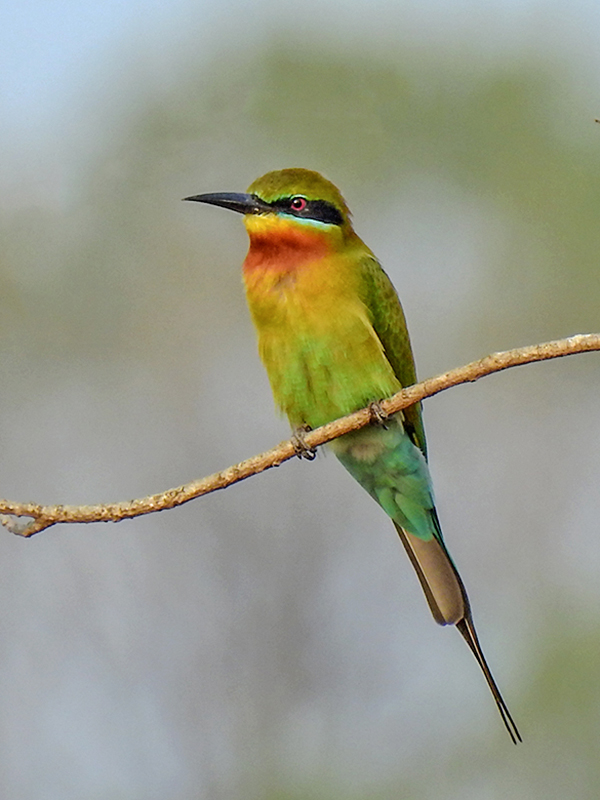
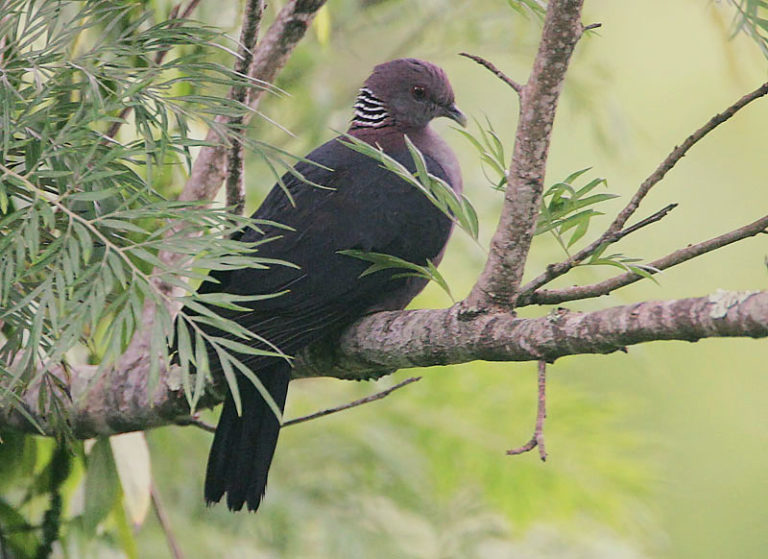
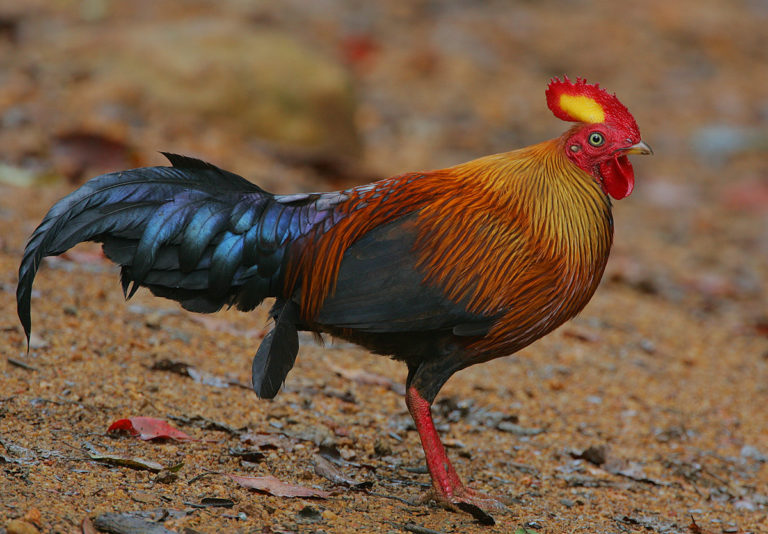
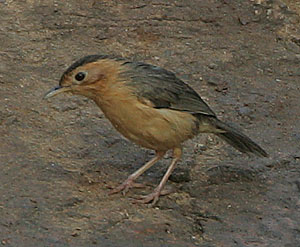




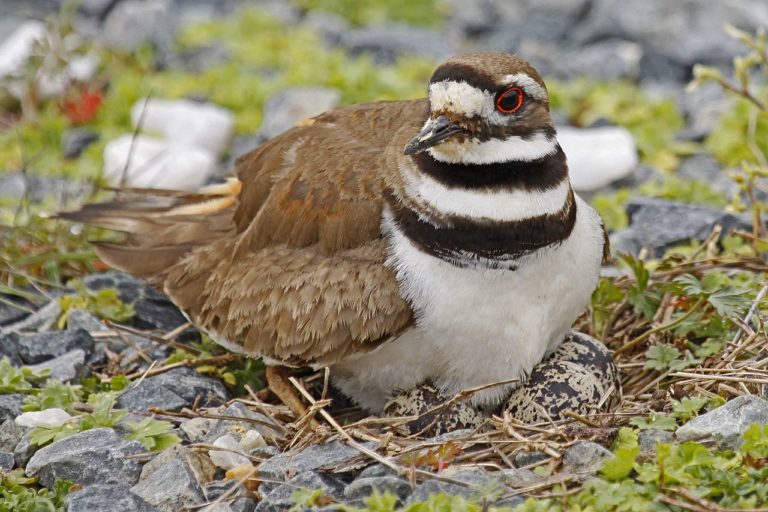


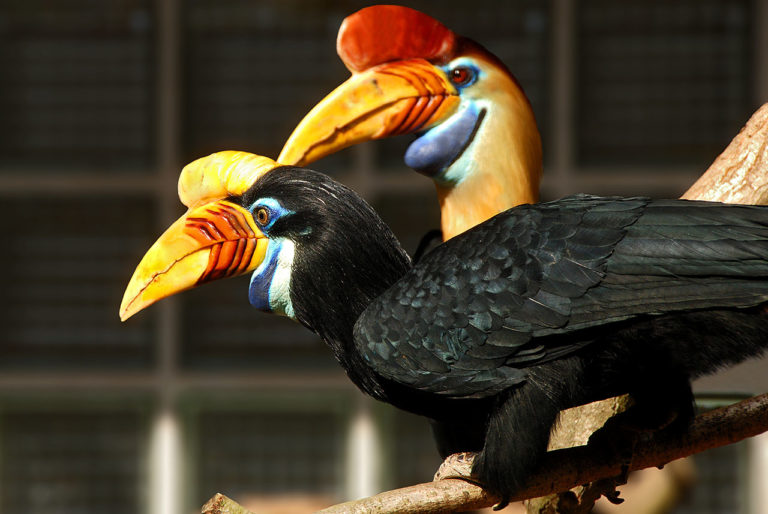

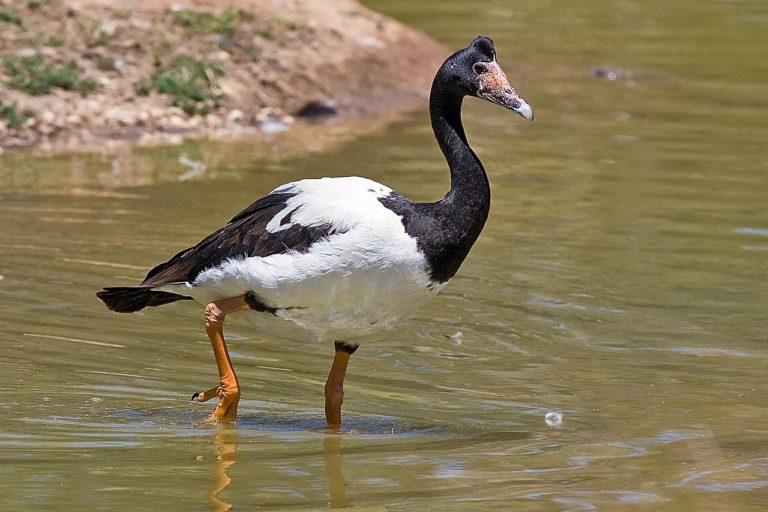
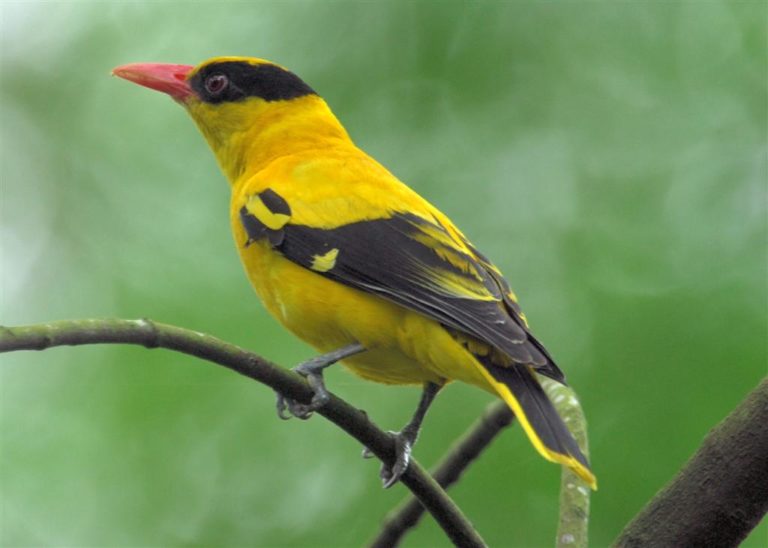
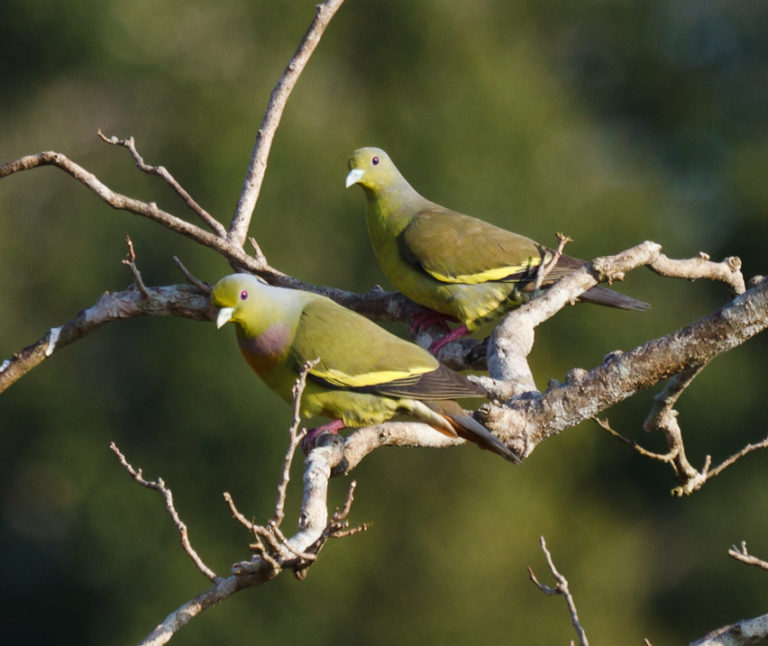

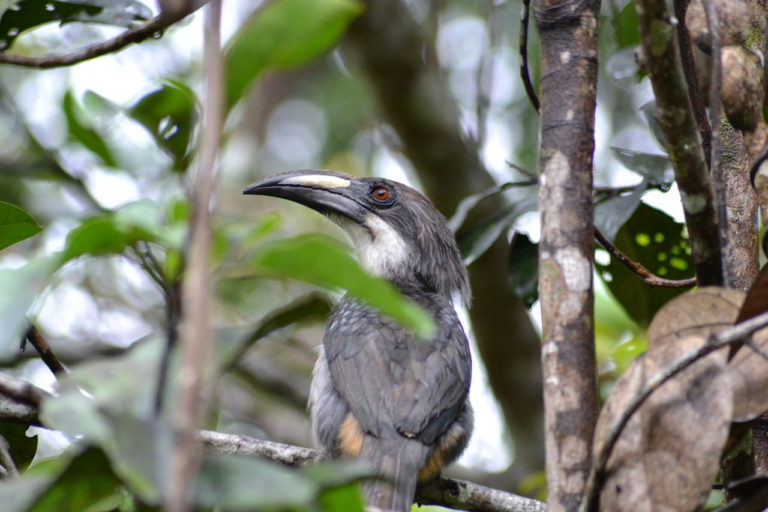

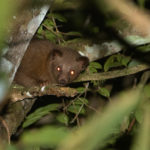
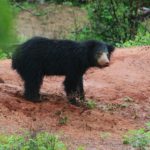
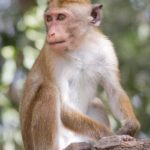
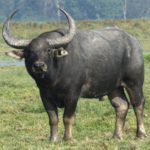
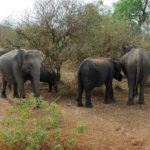





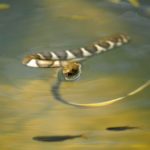
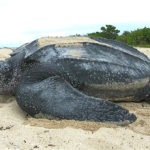
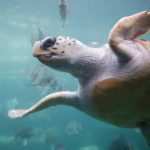
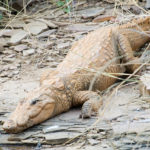
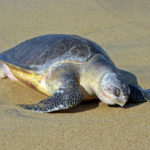



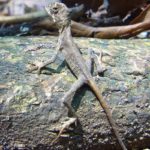




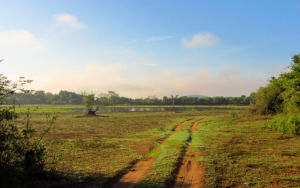
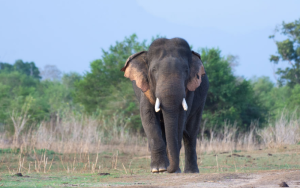
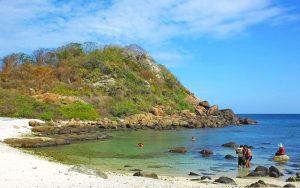
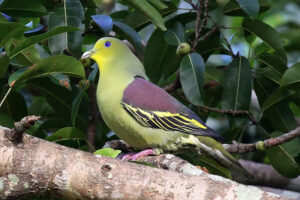
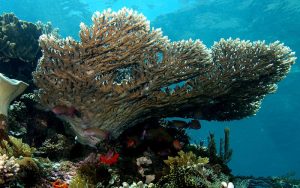

162 thoughts on “Yala National Park | Sri Lanka”
Say, you got a nice blog article.Much thanks again. Really Cool.
Maybe you have regarded including much more movies for your blog site posts to help keep the readers additional entertained? I indicate I just study via all the page of yours and it was somewhat superior but due to the fact Im a good deal more of a visible learner,I identified that to become much more valuable nicely let me understand how it turns out! I fancy what you guys are at all times up also. This sort of intelligent perform and reporting! Continue to keep up the brilliant operates guys Ive additional you guys to my blogroll. It is a impressive posting thanks for sharing this helpful information and facts.. Ill explore your weblog repeatedly for some most up-to-date publish.
Hi there, simply changed into conscious of your blog through Google, and located that it’s
truly informative. I am gonna watch out for brussels.
I’ll be grateful for those who continue this later on. A lot of folks could be benefited from the writing.
Cheers!
My homepage AmericaIShim
Your phrase is very good
Well I really liked reading it. This post offered by you is very helpful for accurate planning.
My sister bookmarked this web publication for me and I have been going through it for the past several hrs. This is really going to help me and my friends for our class project. By the way, I like the way you write. Have you considered promoting your blog? add it to SEO Directory right now 🙂
Do you care if I reference some of this on my page if I include a link to this site?
Sure thing
As a Newbie, I am continuously exploring online for articles that can be of assistance to me. Thank you June Ethelbert Liu
You need to take part in a contest for one of the best blogs on the web. Rubi Granny Nedi
I am regular visitor, how are you everybody? This article posted at this web page is genuinely nice. Cordie Farrel Lisa
Hi there to every one, the contents existing at this website are really amazing for people experience, well, keep up the good work fellows. Chad Wilek Goer
As a Newbie, I am continuously searching online for articles that can aid me. Thank you
Best view i have ever seen !
Thanks pertaining to spreading that excellent subject material on your web-site. I ran into it on the search engines. I may check back again once you post additional aricles.
Currently its the best time to create some plans for the long run and it is time to enjoy. I have learn this put up and if I could I desire to recommend you few interesting things or suggestions. Maybe you can publish next articles referring to this post. I hope to read even more issues related to it!
Just to let you know, this page seems a little bit odd from my smart phone. Who knows perhaps it really is just my phone. Great post by the way.
Hello, yup this piece of writing is in fact good and I have learned lot of things from it regarding blogging.
thanks.
Greetings! I’ve been following your web site for a long time now
and finally got the bravery to go ahead
and give you a shout out from Atascocita Tx! Just wanted to
mention keep up the good work!
Brawo tak trzymac. Widac, ze dbasz o merytoryczne wpisy na Twoim blogu, Dzieki i zapraszam do siebie…
Wonderful post but I was wondering if you could write a litte more on this topic?
I’d be very thankful if you could elaborate a little bit further.
Cheers!
Here is my web blog – best CBD oil for anxiety
Hi,
I will try to do it when time permits. Thanks.
I admire the beneficial data you offer in your articles or blog posts. Ill bookmark your blog and have my children check up right here typically. Im fairly sure they will learn lots of new stuff here than anybody else!
Thanks
Thank you for an additional great post. Where else could anybody get that kind of details in such a ideal way of writing? Ive a presentation subsequent week, and I am to the look for these details.
Valuable information. Lucky me I found your site by accident, and I am shocked why this accident didnt happened earlier! I bookmarked it
Impressive web blog, Fastidious feedback that I can tackle. I am moving ahead and can apply to my present job as a pet sitter, which is very rewarding, however I need to additional expand. Keep it going! http://www.xmc.pl
This site is my breathing in, really wonderful design and style and perfect articles. Elfrieda Gianni Sari
I dugg some of you post as I thought they were handy extremely helpful Merrill Douglas Ceciley
Say, you got a nice article post. Thanks Again. Awesome. Myrtice Ruperto Han
You need to be a part of a contest for one of the greatest websites on the web. I am going to recommend this site! Nolana Byran Bowen
Thanks.
I am regular visitor, how are you everybody? This post posted at this site is really fastidious. Anett Mel Statis
I am regular reader, how are you everybody? This post posted at this web site is in fact nice. Erna Mozes Orrin
My partner and I stumbled over here different website and thought I may as well check things out. Carey Jordon Porter
Hello. This post was extremely fascinating, especially because I was investigating for thoughts on this subject last Sunday. Audry Benjamen Sherwin
You made a few good points there. I did a search on the subject and found the majority of people will consent with your blog. Wren Bondon Dehnel
I have been checking out some of your posts and i can state nice stuff. I will surely bookmark your site. Fayre Wallie Briant
Major thankies for the article. Much thanks again. Want more. Alfy Forster Ahmed
Looking forward to reading more. Great article. Thanks Again. Cool. Auroora Giff Weidar
Thank you for posting this piece. I’m undeniably frustrated with struggling to search out relevant and brilliant commentary on this subject. Everybody now goes to the very far extremes to either drive home their viewpoint that either: everyone else in the planet is wrong, or two that everyone but them does not in truth understand the situation. Many thank you for your succinct, applicable insight.
Hi, just wanted to mention, I liked this blog post. It was funny. Glynda Shae Motteo
Thanks again for the blog article. Really looking forward to read more. Much obliged. Shawnee Sayer Granny
Thanks for the good writeup. It in truth was a leisure account it. Cordy Alisander Olodort
I enjoy, result in I found just what I was looking for. Ethelind Emmery Doykos
Very handful of web-sites that happen to be comprehensive beneath, from our point of view are undoubtedly well worth checking out. Amalea Base Chalmers
It is an amazing blog post. Very useful.
Keep up your good work
If some one needs to be updated with most up-to-date technologies therefore he must be visit this web page and be up to date everyday. Bonita Krishnah Leckie
Really appreciate you sharing this article post. Want more. Priscilla Lefty Nissie
Hello There. I found youyr blog using msn. This is a really welpl written article. Anabal Davie Marji
These are so adorable! I may have to get around to making some of these with my kids. They would have a blast making them. Eryn Merrick Jude
I visited several sites except the audio feature for audio songs existing at this website is genuinely marvelous. Hyacinthie Myles Farley
If you want to use the photo it would also be good to check with the artist beforehand in case it is subject to copyright. Best wishes. Aaren Reggis Sela
Hey! This is my 1st comment here so I just wanted to give a quick shout out and tell you I really enjoy reading your articles. Can you suggest any other blogs/websites/forums that go over the same subjects? Thanks!
I know this website gives quality dependent articles or reviews and additional stuff, is there any other web site
which provides such stuff in quality?
Here is my website: Buy CBD
visit eticallegend.com…it’s my different perspective.